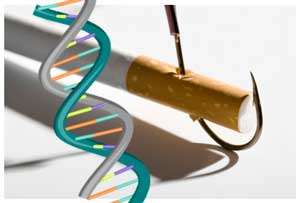 Photo by ©iStock.com/Olga Milkina
Photo by ©iStock.com/Olga MilkinaGenetic and environmental contributions are significant determinants of cigarette smoking, but very little is known about the underlying neurobiological mechanisms of the gene by environment interaction. Researchers at NIDA and the University of Toronto investigated the role of a gene, CYP2A6, which produces an enzyme responsible for metabolizing nicotine; different variants of this gene inactivate nicotine at different rates, influencing how much nicotine remains in their body after smoking. Which variant an individual has is correlated with different smoking behaviors such as age at first use, success at quitting, and response to treatment.
Functional imaging of a group of smokers showed an interaction between CYP2A6 genotype and smoking in brain areas including the dorsal anterior cingulate cortex and the ventral striatum. Functional connectivity strength was greater in smokers with the normal (versus slow metabolizing) genotype. These differences did not appear in non-smokers, suggesting that there is a causal link between smoking and changes in brain function seen in those with nicotine addiction and that these changes are mediated by the rate of nicotine metabolism (as determined by the CYP2A6 gene) and the concentration of nicotine in the brain. These data also suggest that treatment may be able to reverse these nicotine-induced brain changes.
